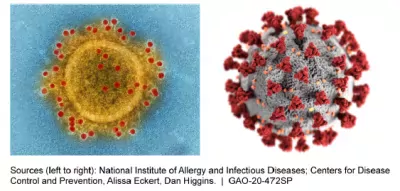How Prepared Are We for a Pandemic?
The outbreak and spread of COVID-19 from China to the U.S. shores has brought the term coronavirus into daily usage and raised the question “How prepared are we for a pandemic?”
Today’s WatchBlog explores GAO work looking at pandemic preparedness, starting with our most recent report on the national biodefense strategy.
What is a pandemic?
Pandemic, epidemic, outbreak. What do these terms mean? According to the Centers for Disease Control and Prevention (CDC):
- Pandemic refers to an epidemic that has spread over several countries or continents, usually affecting a large number of people
- Epidemic refers to an increase, often sudden, in the number of cases of a disease above what is normally expected in that population in that area.
- Outbreak carries the same definition of epidemic, but is often used for a more limited geographic area.
The CDC also says pandemics happen when new (novel) viruses emerge which are able to infect people easily and spread from person to person in an efficient and sustained way. Because this strain of coronavirus is new to humans, very few people will have immunity against it, and a vaccine is not currently available. More on pandemic basics is available on the CDC website.
The Coronavirus
Currently, 7 strains of coronavirus have been identified that can cause illness in humans. The most recent coronavirus disease, COVID-19, was first seen in China in December 2019. Our recent Science & Tech Spotlight discusses these in more detail.
Coronaviruses are most commonly transmitted by coughing, sneezing, person-to-person contact, and touching objects that have viral particles on them, according to the CDC. Most infections result in mild to moderate symptoms, such as runny nose, headache, cough sore throat, fever, and a run-down feeling.
Since 2002, there have been 3 severe outbreaks of respiratory illnesses caused by coronaviruses. In 2012, an outbreak of Middle East Respiratory Syndrome (MERS) had a mortality rate of as high as 34%. As of February, COVID-19 had infected more than 70,000 people infected and had a 3% mortality rate, according to the World Health Organization.
The figure below shows electron microscope image and schematic of coronavirus particles (Middle East Respiratory Syndrome Coronavirus and general coronavirus respectively).
Image

National Biodefense Strategy
In 2018, a National Biodefense Strategy was created to guide the nation’s strategy for building and maintaining capabilities to address biological threats ranging from naturally occurring diseases like the coronavirus to biological weapons. In a report issued February 19, we reviewed how well this strategy has worked so far.
While the strategy calls for joint efforts between federal agencies and the private sector, we found that there are no clear processes, roles, or responsibilities for making joint decisions. We made 4 recommendations to improve implementation efforts. Our report includes more information about our review and recommendations.
Long-Standing Challenges Related to Defending Against Biological Threats
In late June 2019, GAO’s Chris Currie testified before a House committee on long-standing challenges related to the nation’s ability to detect and respond to biological threats. These challenges included, among things the federal government’s ability to detect, assess and respond to threats.
Other related GAO work
GAO has a broad portfolio of work on the federal government’s response to and preparedness for infectious diseases, viruses, and biological threats including Zika, Ebola, Avian Influenza, and H1N1.






